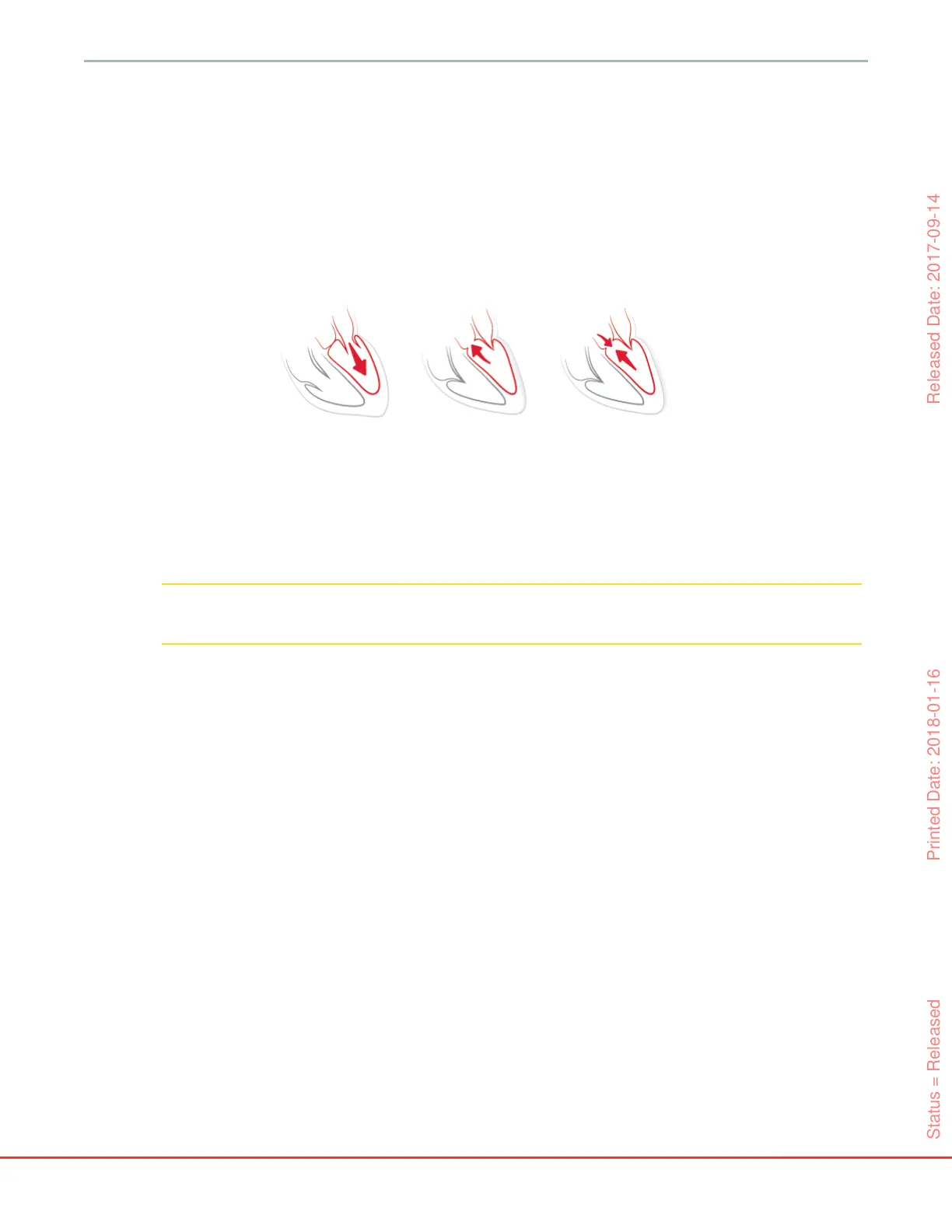HemoSphere Advanced Monitor 12 Advanced Features
159
• Dynamic arterial elastance (Ea
dyn
), – a measure of the afterload to the left ventricle by the arterial
system (arterial elastance), relative to the left ventricular elastance, computed as the ratio between
PPV and SVV [8]. The arterial elastance is an integrative arterial load parameter that incorporates
systemic vascular resistance (SVR), total arterial compliance (C) and systolic and diastolic time
intervals [9, 10].
The correlation of these parameters to physiological status and their relationship to clinical outcome has
been well-studied with a large body of clinical literature.
Most interventions to treat SV (or SVI) and MAP, impact primarily SV and its determinants preload,
contractility, afterload. Decision support for treatment decisions should integrally provide information on
all three aspects, since they often inter-relate.
SVV is limited as preload measure to patients that are mechanically ventilated with stable ventilation
frequency and tidal volumes and that do not have intra-abdominal insufflation [6, 7]. SVV is best used in
conjunction with stroke volume or cardiac output assessment.
dP/dt is best used in conjunction with stroke volume variation and stroke volume or cardiac output
assessment.
CAUTION Exercise caution when using dP/dt in patients with severe aortic stenosis, since the
stenosis may reduce the coupling between the left ventricle and the afterload.
By normalizing the arterial elastance by the ventricular elastance, their ratio becomes an index of the
matching between the LV and the arterial system. When matching there is an optimal transfer of blood from
the LV to the arterial system without loss of energy and with optimal stroke work [3, 8, 9].
Ea
dyn
has been shown to provide an indication of potential afterload responsiveness to increase MAP by
giving volume in preload volume responsive mechanically ventilated patients [4] and spontaneously
breathing patients [5]. Afterload responsiveness to increase MAP is greater potentially at values of Ea
dyn
>
0.8 [4, 5, 8]. A hemodynamic algorithm based on Ea
dyn
was associated with a shorter duration of vasopressor
(norepinephrine) treatment in post-cardiac surgery ICU patients [11, 12].
Ea
dyn
is not limited to patients that are mechanically ventilated because it is a computation of presented as
the ratio of PPV/SVV [5, 8]. Ea
dyn
is best used in conjunction with stroke volume variation (in ventilated
patients) and stroke volume or cardiac output assessment.
SVV, dP/dt, Ea
dyn
share the property that one is seldom independent of one or the other. Giving volume to
increase the preload and increase the stroke volume leads to an increase in cardiac output and arterial
pressure; therefore, the afterload on the ventricle increases. Increasing afterload (increasing aortic pressure)
by increasing systemic vascular resistance, will reduce the stroke volume. The resulting increased end-systolic
volume, however, leads to a secondary increase in end-diastolic volume because more blood is left inside the
ventricle following ejection and this extra blood is added to the venous return, thereby increasing ventricular
filling, which increases contractility (Frank-Starling mechanism) and partially offsets the reduction in stroke
volume caused by the initial increase in afterload.
Preload Contractility Afterload
Status = Released Printed Date: 2018-01-16 Released Date: 2017-09-14

